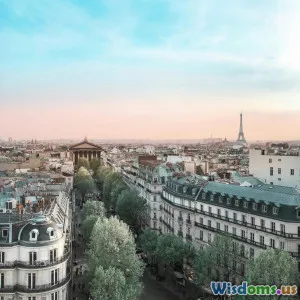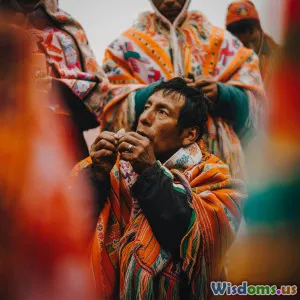
Are Festivals Losing Their Original Cultural Significance?
8 min read Exploring how modern festivals evolve and the impact on their original cultural essence. (0 Reviews)
Are Festivals Losing Their Original Cultural Significance?
Festivals have long served as vibrant expressions of cultural identity, connecting communities and passing down traditions across generations. Yet, in our fast-paced, globalized world, many raise a thought-provoking question: are festivals losing their original cultural significance? As celebrations grow larger, more commercialized, and often tailored to global audiences or tourism, the balance between preserving authenticity and evolving with the times becomes increasingly delicate. This article explores how festivals worldwide are adapting – sometimes at the cost of their deep-rooted cultural meanings – and what that implies for society.
The Historical Roots of Festivals
Historically, festivals were deeply intertwined with religious beliefs, seasonal cycles, communal rituals, and cultural storytelling. Take, for instance, the Hindu festival Diwali, which celebrates the victory of light over darkness and good over evil. Its rituals, including lighting lamps and exchanging gifts, stem from mythological narratives embedded in Indian culture.
Similarly, the Elwira Festival in Poland commemorates the harvest and pays homage to agrarian traditions. Through folk music, dances, and traditional costumes, festivals like these reflect the social values and historical experiences of communities.
Anthropologists point out that festivals primarily functioned as means for communities to reinforce their identity and socialize. According to Professor Victor Turner, a key figure in ritual studies, festivals allow a “communion of participants” fostering social bonds and symbolizing shared beliefs.
Modern Shifts: Commercialization and Globalization
In recent decades, festivals face significant pressures to adapt to modern demands:
Commercialization
Many festivals now carry considerable economic weight. For example, Oktoberfest in Germany attracts millions annually and generates billions in revenue, benefiting local businesses and tourism. Yet, the influx of commercial interests sometimes overshadows original customs. Traditional Bavarian attire and regional foods become commodities tailored to visitor expectations rather than authentic cultural expressions.
Similarly, the Chinese Lantern Festival, once a localized event marking the end of Lunar New Year celebrations, has transformed into a spectacle with large-scale light shows and corporate sponsorships. This expansion boosts local economies but sparks debate about authenticity.
Globalization and Cultural Exchange
Global connectivity means festivals are no longer confined to their places of origin. Events such as the Brazilian Carnival or the Japanese Cherry Blossom Festival inspire celebrations worldwide, often blending local customs with borrowed elements.
International tourists seeking immersive cultural experiences encourage festivals to ‘package’ traditions to suit diverse audiences. The commercialization coupled with cultural commodification might lead to “festival fatigue,” where the deeper significance is diluted in favor of entertainment value.
In Thailand, the Songkran Festival, celebrating the traditional New Year with water splashing, has turned into a massive global party. While joyful, critics argue that the core spiritual meaning linked to cleansing and renewal is waning.
Examples of Erosion and Preservation
Erosion of Cultural Meaning
A telling example is Halloween in the United States. Rooted in Celtic harvest festivals and ancient rituals, it has morphed into a commercial-driven event emphasizing costumes, candy, and entertainment. While still cultural, its original spiritual context tied to marking the passage to the afterlife is largely forgotten.
Another example is the Rio Carnival, which combines African, Portuguese, and indigenous influences but increasingly emphasizes parades and tourism, sometimes sidelining the social critiques traditionally expressed in samba schools.
Movements to Preserve or Revive Authenticity
Many communities proactively strive to maintain or revive the cultural essence of their festivals. The Navajo Nation’s Nightway ceremony is performed by medicine men with strict protocols, resisting external influences to protect their sacred traditions.
In Scotland, the Beltane Fire Festival carefully incorporates ancient Celtic rites symbolizing fertility and renewal, attracting attention but striving to keep cultural significance intact.
Nonprofit organizations and UNESCO also play roles in designating some festivals as Intangible Cultural Heritage, raising awareness and encouraging sustainable cultural tourism.
The Role of Technology and Social Media
Technology can both help and hinder cultural preservation. Social media platforms provide a stage for broader sharing of festival traditions but can also encourage oversimplification or commercialization.
Virtual reality (VR) and live streaming now allow global audiences to experience festivals remotely, making cultural rituals more accessible but potentially detached from their context.
The challenge remains ensuring technology amplifies understanding rather than reducing festivals to mere online spectacles.
Why Cultural Significance Matters
Preserving the original cultural significance of festivals is vital for several reasons:
- Identity and Community Cohesion: Festivals reinforce belonging and collective memory.
- Education and Cultural Transmission: They serve as living textbooks for younger generations.
- Respecting Origins: Recognizing the deep history behind celebrations fosters respect for diverse cultures.
Cultural dilution risks turning festivals into hollow events, reducing them to market spectacles. This not only impoverishes cultural diversity but can lead to loss of communal values and spiritual practices.
How Can We Foster Authenticity in Festivals?
- Community-Led Organization: Ensuring local stakeholders control festival narrative.
- Balanced Tourism: Promoting respectful cultural tourism that prioritizes education over entertainment.
- Cultural Literacy Programs: Teaching the history and meaning of festivals broadly.
- Regulation: Local governments can protect festivals from unchecked commercialization.
Conclusion
Festivals epitomize the heart of cultural identity and historical continuity. While modernization, commercialization, and globalization challenge the preservation of their original significance, they also offer opportunities to reach new audiences and celebrate diversity on a grander scale. The key lies in finding equilibrium—honoring deep-rooted traditions while embracing evolution.
Communities, policymakers, and festival producers must collaborate to keep festivals grounded in their authentic cultural essence. Only then can these vibrant celebrations continue to inspire, educate, and unite generations meaningfully.
References:
- Turner, Victor. The Ritual Process: Structure and Anti-Structure, 1969.
- UNESCO Intangible Cultural Heritage List.
- Florian Bagtzoglou, “Commercialization of Local Festivals,” Journal of Cultural Tourism, 2019.
- National Geographic, “The Globalization of Traditions: Festivals in Transition,” 2021.
- Interview with Dr. Melissa Hayden, Cultural Anthropologist, 2023.
Author: Cultural Insights by AI
Rate the Post
User Reviews
Popular Posts




















